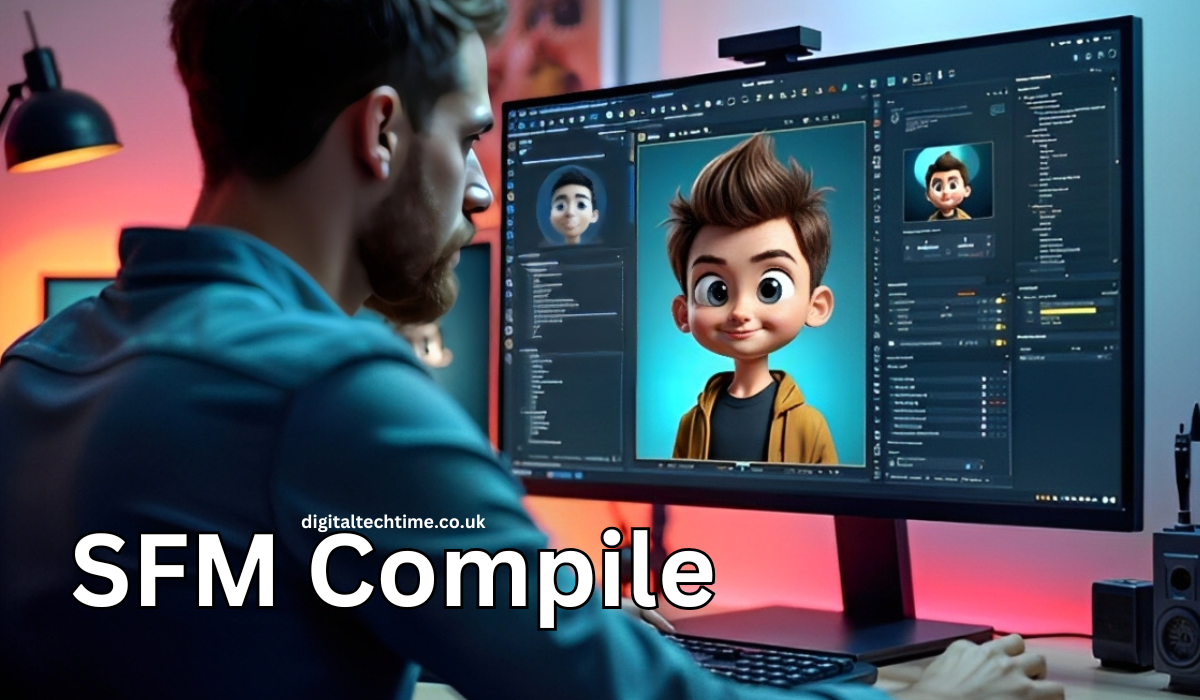Learn everything about the SFM Compile process, from understanding how it works to common troubleshooting tips. Our in-depth guide helps you master the art of compiling Source Filmmaker projects effectively.
Introduction
Source Filmmaker (SFM) is a powerful animation tool that allows creators to produce detailed and engaging animations using Valve’s proprietary Source engine. However, creating an animation in SFM is just the first step; compiling is where the magic happens. The term “SFM Compile” refers to the process of turning a project into a playable or exportable format that can be used in other programs or platforms, including videos and game environments. When you compile your project in SFM, the scenes, textures, models, and animations are processed and converted into a format compatible with the Source engine. This process can be the most complex part of your animation pipeline, as it ensures that everything works as intended and that the final output is optimized.
The Importance of SFM Compile
Without proper compiling, your work in Source Filmmaker would remain a series of raw assets—animations, models, and textures—without being able to play them back or render them in the engine. The SFM Compile process is crucial because it transforms these assets into usable content, making sure that animations are fluid, models are correctly rendered, and lighting effects are applied effectively. Furthermore, compiling helps you catch any errors or missing elements that could cause your project to break during rendering. In essence, compiling ensures that everything in your animation plays as smoothly as you envision it.
How Does SFM Compile Work?
The process of compiling in Source Filmmaker is fairly intricate, involving several key steps. First, your scene must be saved, and all animations and models must be correctly linked to the project. Then, the source files, which include everything from texture files to skeletal animations, are packaged and processed. This process involves converting the assets into formats that the Source engine can read, such as .dmx files for animations or .mdl files for models. Once the assets are compiled, the project is ready for rendering. The final output can be a video file, a playable in-game sequence, or a virtual scene that you can share with others.
Preparing Your Project for Compilation
Before diving into the actual compiling process, it’s important to properly prepare your project in Source Filmmaker. First, ensure that all assets—models, textures, and animations—are correctly linked to your scene. Missing or broken links can result in errors during the compilation. Additionally, make sure that all animation sequences are finalized and that the lighting setup is complete. It’s also wise to double-check the positioning of characters and camera angles, as these elements play a crucial role in the final output. Preparing your project is a vital step that ensures the compile process goes smoothly without any surprises.

Step-by-Step Guide to SFM Compile
Compiling in Source Filmmaker requires you to follow a specific set of steps to ensure the project is processed correctly. The first step is to choose the type of compile you need—whether it’s compiling an animation sequence or a scene. Once you’ve selected the appropriate option, click the “Compile” button in SFM’s rendering settings. This begins the compilation process, which involves packaging assets, checking for errors, and converting the project files into the required formats. Once this is done, you’ll receive a notification informing you whether the compilation was successful or if any errors were encountered.
Common SFM Compile Errors and Troubleshooting
Despite the meticulous steps in preparing your project, you may encounter errors during the compilation process. Some of the most common issues include missing assets, incorrect file paths, and incompatible file formats. For example, a missing texture file can result in a “missing texture” error during the compile, leading to issues in the final render. Additionally, sometimes models may fail to compile if they haven’t been properly optimized for the Source engine. To troubleshoot these errors, carefully check the console log in Source Filmmaker for specific error messages. Address these issues one by one, correcting any missing assets or incorrect file paths.
Advanced Compilation Techniques for Complex Projects
For more advanced users, there are several techniques you can apply to improve the compilation process. For example, when working with complex models or highly detailed environments, optimizing your assets can greatly reduce the load time and improve rendering speed. This includes reducing polygon count for models, compressing texture files, and ensuring that animations are as streamlined as possible. Additionally, using custom compile scripts can help automate the process, allowing you to compile multiple projects or large scenes more efficiently. These advanced techniques not only speed up the workflow but also enhance the overall quality of your final output.
Using External Tools to Enhance the SFM Compile Process
In addition to Source Filmmaker’s native compiling tools, there are several external programs that can assist in the compiling process. For example, studiomdl is a command-line tool that allows you to compile Source engine models, while vtex is used to compile textures. These tools give you greater control over how assets are compiled and can help address any issues that arise during the SFM compile. Many creators also use Blender or 3DS Max to create and optimize models before compiling them in SFM, ensuring that they meet the specifications required for smooth performance in the Source engine.
Understanding Compile Logs in Source Filmmaker
During the compilation process, Source Filmmaker generates a log file that provides detailed information about what is happening behind the scenes. These compile logs are invaluable when troubleshooting issues, as they provide insight into any errors, warnings, or missing assets. For example, if the compile process fails due to a missing texture, the log file will indicate which texture file was not found. By reviewing the compile logs carefully, you can quickly identify what went wrong and take the necessary steps to fix it. It’s also a good practice to keep track of these logs for future reference, especially when working on large, complex projects.

Finalizing the Compilation Process
Once the compile process has completed successfully, the next step is to finalize your project. This may include exporting the rendered video or preparing the assets for use in other programs. You can choose to export your animation as a video file in various formats, such as .avi or .mp4, for sharing or editing. Alternatively, you may want to load the compiled assets directly into a Source engine game or another program. At this point, it’s important to double-check the final output to ensure that everything looks as expected. If there are any issues, you can always go back to the SFM project and make adjustments before recompiling.











